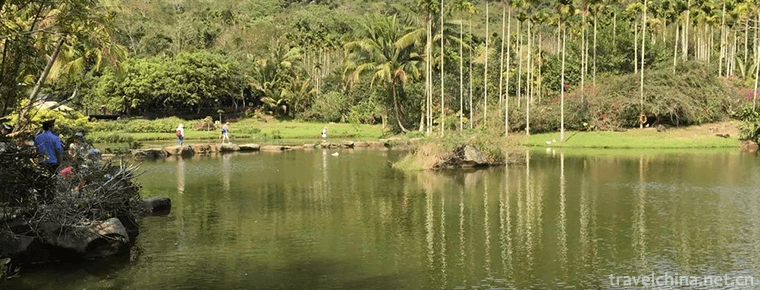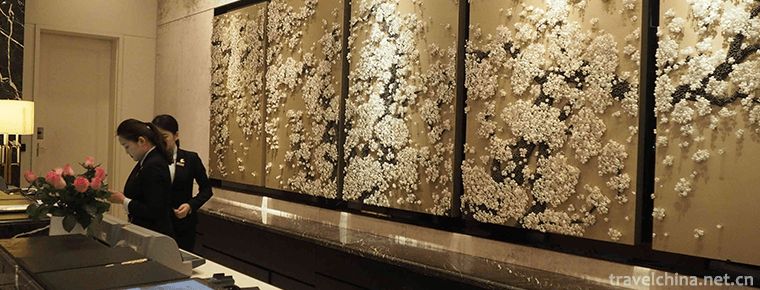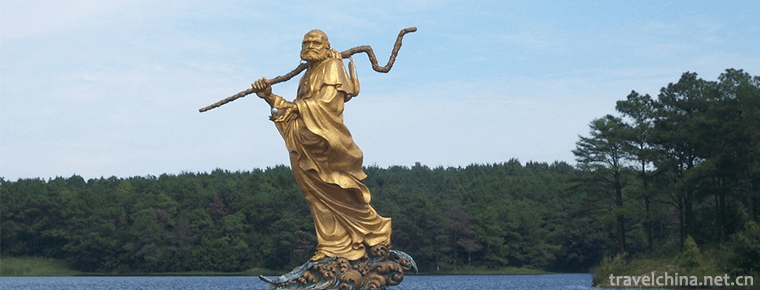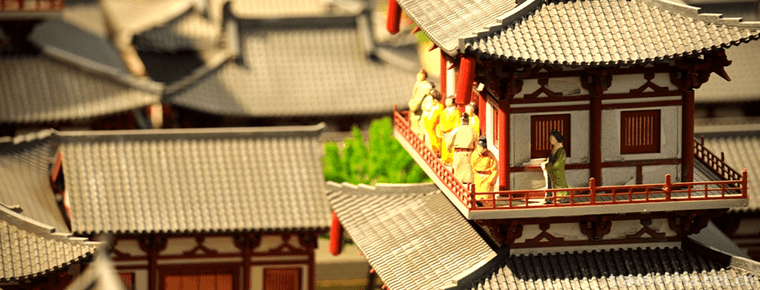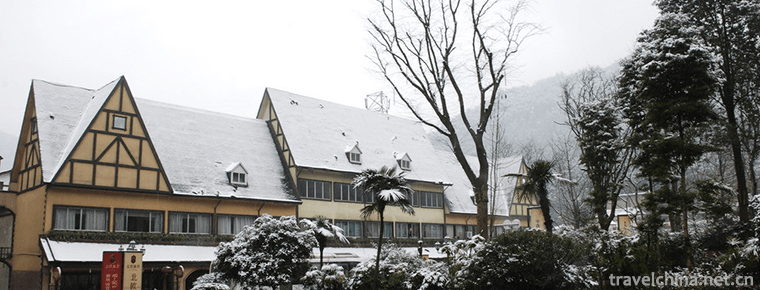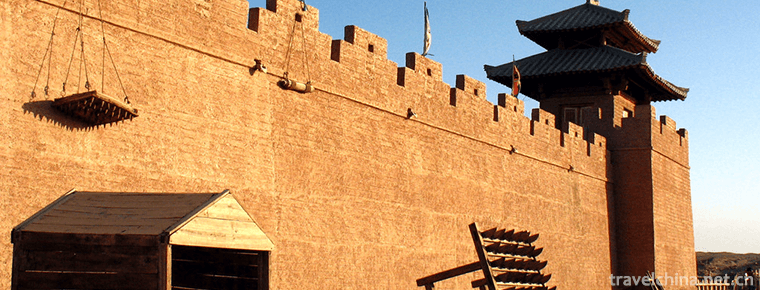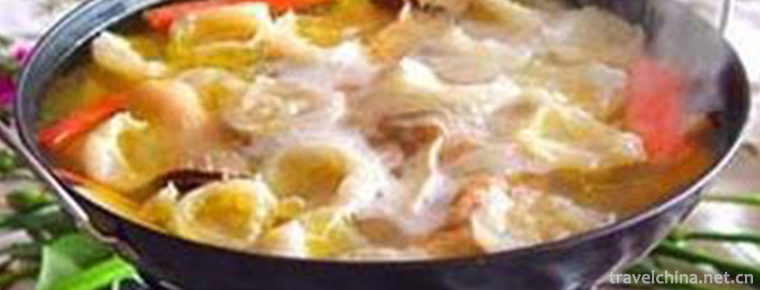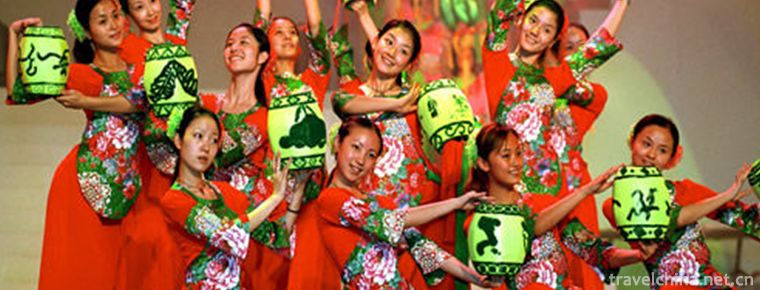Dong medicine
Dong medicine
Dong medicine is a bright pearl in the treasure house of Chinese medicine. The Dong people living in mountainous areas for generations have accumulated experience in treating various diseases and formed a unique Dong medicine system. Because Dong medicine is simple and practical in the treatment of diseases, it has a broad foundation among the Dong people.
On June 7, 2008, Dong Medicine was approved by the State Council to be included in the second batch of national intangible cultural heritage list.
brief introduction
Dong medicine is listed as the second batch of national intangible cultural heritage list
Declaration Name: Traditional Medicine
Declared item: "Crossing Huang" Drug Manufacturing Technology
Declaration Number: IX-16
Declaration area: Miao and Dong Autonomous Prefecture in Southeast Guizhou Province
Brief description of Dong medicine: Most of Dong medicine comes from wild plants, and sometimes some valuable or rare plant medicines are planted. There are few foreign medicines. In the course of its development, Dong medicine has gradually developed from unilateral to compound prescriptions. Alcohol, plaster, Dan medicine and powder have developed together with medicine and medical treatment.
Dong medicine characteristics: Dong medicine generally does not process flower drugs. It can be made into red medicine, plaster, alcoholic medicine, powder, knife smoke and other preparations.
Brief introduction to Dong medicine
Brief History of Dong Medicine: In the early period, witch medicine was the main medicine, and its medical development experienced primitive medicine, Dong Nuo medicine (i.e., witch medicine, Dong medicine).
Learning, experiential medicine, theoretical medicine and other stages. Its core is the thought of the five-in-one of heaven, earth, air, water and human. It mainly emphasizes the importance of air and water in maintaining human function. Diseases are divided into cold diseases and fever diseases.
Dong Medicine Theory: Six Nature and Six Flavors Theory. Six Flavors are sour and astringent, bitter, hot, fragrant, light and sweet. Six Flavors are hot, cool, receptive, dispersive, withdrawal and tonic. Medication should first master six nature and six flavours. According to the corresponding relationship between six flavours and six nature drugs, medication should be determined according to the clinical manifestations of the disease.
Diagnostic methods: inquiry, visit, touch and pulse cutting.
Therapeutic methods include fever abatement, cold elimination, sweating, drainage, filling, curettage and dragging. Internal medication is also used. Suture, fracture reduction and bladder lithotripsy are also used.
Drug source variety
There are many varieties of plants and abundant medicinal resources in the areas where Dong doctors live. According to the results of the 1986 drug resources survey, there are more than 1,000 medicinal plants. At present, there are 687 varieties of Dong medicine collected, 134 families and 294 varieties of books are arranged. Most of these medicines are wild plants, and some valuable or rare plant medicines are also domestic species, but few foreign medicines are available.
In the long history of Dong medicine, knowledge of Dong medicine has been continuously accumulated, from unilateral to compound prescriptions. Alcohol, plaster, red medicine and powder are all available. From the aspect of drug composition and compatibility preparations, Dong medicine has been able to meet the clinical needs and medicine and medical treatment have developed together.
Ethnic presentation
Dong is a branch of the ancient Yue people. It is now distributed in Guizhou, Hunan, Guangxi, Hubei and other provinces. There is no native language, but there is an independent language.
Development History
(1) Ancient Dong Medicine
Dong medicine
The Dong ancient song "Ma Ma Mei and Guangong" records: "In ancient times, there was a filial piety in the Dong nationality, Ye Guangong. His mother was sick everywhere, met Xianma Ma Mei, cured his mother, and they became parents. Ma Ma Ma Mei could identify many medicines and cure many diseases. She taught Guangong that"Weng Zai would retire, Weng Ga would give Du, Weng Dang would return to sow Sai Geng, and eliminate the desire to use Badang." Ye Xiang, a friend of Guangong, visited Guangong one day. On the way to Guangong, he saw the green male serpentine. He wanted to rape the female serpentine lizard and was rescued by Ye Xiang. Her husband thanked Ye Xiang and gave the bright grass for the treatment of ophthalmopathy. "This ancient song tells the legend of the origin of Dong medicine. In the ancient song, animal lizardin and lizard were treated with personality." This is the symbol of the legendary origin of ancient society. The medical relics of matrilineal society can also be seen in Dong medicine. For example, male hematuria and cloudiness, before its naming, the word "woman and man" is used to refer to women and men's erythema and women and men's leucorrhea; on the contrary, if female patients are called by the name of the disease directly. This naming method originated in matrilineal society at the latest. Also, as the above-mentioned medical immortal Ma-mei. It's women.
(2) Early Chongnuo Medicine
Totem worship of the Dong nationality: The Dong nationality believes in the primitive religion of polytheism, mountains, rivers, ancient trees, boulders, ancestors and so on. There is a saying in the Dong nationality that the soul is immortal. It is believed that after death, the soul of the Dong nationality should return to the place of "half of the river is clear, half of the river is turbid" or ascend to the "heaven". In the polytheism of the Dong nationality, the main goddess are goddesses, such as medical fairies and medicine fairies. Ma Ma-mei, the "Sado" spreading smallpox, the "Sabin" making wine songs and so on. The only noble "Sa-year-old" widely respected is also a goddess. Dong Chong-nuo (also known as Dong Nuo, also known as wizard or teacher) believes that people are sick because of ghosts and gods, and patients lose their souls before they become ill, they must carry out "soul-calling". The soul-calling "five gods painted by Chong-nuo" puts the five gods on their foreheads and uses them. Red cloth bandage, but no Nuo face; some areas wear Nuo face, no gods placed in front of the forehead. There are four wooden idols, two small. Two big men, the male called Dong Chan, the female called couple Nuo; two small men, the male called Xiao Chan, the female called Niang Nuo. Four puppets are arranged in front of the patient's bed. The Nuo rusherself holds the master's knife token, recites words, performs magic, and then goes to the field by daring (the assistant of Nuo rushing) to perform magic tricks. Go out to chase the soul and find some insects in a cave or under a big tree or rock.
Insects are placed beside patients'pillows to indicate that their souls have been recalled. There are still such ancient medical techniques in remote Dong mountainous areas, but in economically developed areas, Chongnuo is no longer a mere cure for people by witchcraft. There, according to the patient's "Eight Characters Words", the time of illness is calculated as "life disease" or "body disease" to treat. If ghosts cause illness, it is called "life disease", and life disease can only be respected. To seek reconciliation with ghosts and gods; not ghosts, which cause disease, is called "body disease", and body disease should be treated with drugs. Chongnuo can generally master dozens of diseases and nearly a hundred commonly used medicines. For example, Chongnuo can cough blood (Dong language is called scary Qia throat plate, meaning hemoptysis above chest) and take it in boiled water with scolding consultation plate (Crane grass). Hematochezia (Dong language is scary Lu Zhipan, meaning hemorrhage below chest) and stool blood (Dong language is scary Lv Zhipan, meaning hemorrhage below chest). It is difficult to verify when the theories of "body disease" and "fatal disease" originated, but it is possible that after the Ming Dynasty, a large number of foreigners entered the Dong area, bringing foreign culture and promoting Dong medicine. The development of medicine.
Dong medicine
(3) Modern Dong Medicine
Because of the absence of the written language of the Dong nationality, there are few records about medicine. "Li Ping Fu Zhi" reads: "Li Ping treats women and men's diseases, picks leaves in the mountains, and commonly known herbs are quite effective." "In the eleventh year of Hongwu Ming Dynasty, the peasant rebellion army led by Wu Mian of the Dong nationality in Liping, his mother was practicing medicine in the army." During the period of Hongwu Ming Dynasty, Wang Chongjing of the Dong nationality (1368-1444) was in Daguang and Xiaoguang of Jianhe County. In 1826, Jiang Nianru of Kaizhai, Jianhe County, abandoned literary medicine and wrote a Book (manuscript) entitled "Herbal Medicine Prescription". In his preface, Jiang wrote: "Since childhood and strong, several war scouts have failed to achieve their merits and fames, but they have not received any rewards. Now, C Xu, their mothers are insane, besides prescriptions, prescriptions of ancient people and ancestral mysteries are collected according to the rules, totaling four volumes of 49 categories." In memory of him, a pavilion for the king of medicine was built. The pavilion was neutral with stone tablets. It was destroyed because of the construction of highways. Forty-three years of Qianlong in the Qing Dynasty to twenty years of the Republic of China
Diagnosis method
1. asked questions
Asking about illness is the main means of diagnosing diseases in Dong doctors. By inquiring about the course and conscious symptoms of illness, the condition and cause of illness, when and where to get sick, where to get sick first, and where to get sick afterwards, the degree of pain is general pain or pain intolerance, perspiration during pain, parts of the head, neck, chest, navel, upper and lower feet of pain must be grasped when asking about illness. If you eat too much, the pain below the umbilical eye is committing cereal; the pain above the umbilical eye is committing water, wine, fish and meat; the chest pain is committing alcohol, meat and acid. Dong doctors often use this as the basis for diagnosis and treatment.
Dong medicine
Look at the face, skin color. Blue, purple, white, red, yellow. Blue face is cold disease; yellow face is tide disease, or weak disease, or offending men and women (excessive housing); purple face is five labors and seven injuries; red face is fever; white face is weak disease.
3. touch trial
Touch the top of the head and skin without fever, sweat or sweat, cold or fever. If it's a trauma, feel if it has tendons, broken bones, dislocation, dislocation.
4. pulse
There are eight channels and two syndromes in the diagnosis of pulse in Dong medicine. The eight channels are peaceful pulse, thick pulse, fine pulse, long pulse, short pulse, fast pulse, slow pulse and empty pulse. The two syndromes are cold disease and fever.
Peaceful pulse: Not too small, the pulse comes to be peaceful. Peaceful pulse is the pulse of healthy people.
Coarse veins: The veins are thick and powerful, and the vessels are large and easy to touch. Coarse veins are mostly fever.
Fine veins: The pulse is weak and hard to touch. It indicates weakness.
Long pulse: The pulse is full and long, but not fast; the pulse is not strong and the vessels are not thick. It means cold disease and chronic illness and labor disease.
Short pulse: Short pulse, weak. Indicates the onset of fever, or that fever is about to disintegrate.
Fast pulse: The pulse is strong and fast. It means fever or excessive bleeding.
Slow pulse: The pulse is very slow and deep. It means long illness or dark injury and strain for many years.
In addition, there are three out, three turn, four eight tiger mouth veins.
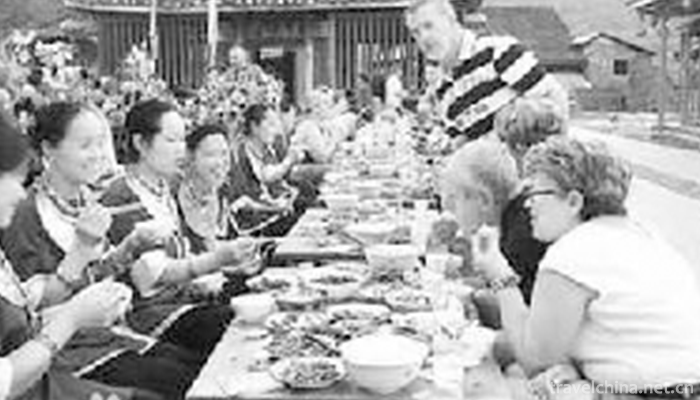
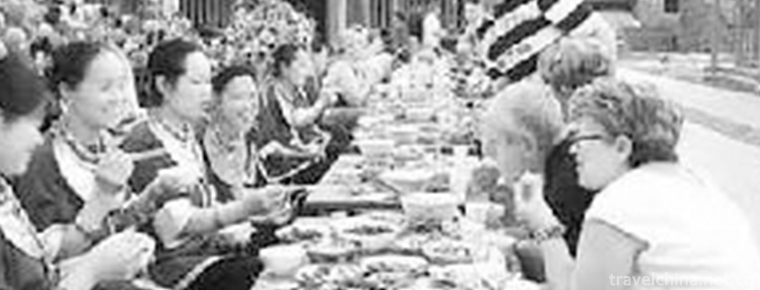
Dong medicine
-
Yanoda Tropical Rainforest Scenic Area
Yanuoda Tropical Rainforest Scenic Area is the only tropical rainforest located at 18 degrees north latitude in China. It is the concentration of five tropical rainforests in Hainan Island
Views: 140 Time 2018-12-12 -
Longting Hotel East China Sea Shenzhen
Langting's history can be traced back to 1865. The grand opening of Langting Hotel in central London, England, has become the first truly "luxury hotel" in European history, creating a brill
Views: 595 Time 2018-12-16 -
Jiaohe ruins
Jiaohe Old Town is the oldest and most well-preserved native building city in the world. It is also the most complete urban relic preserved in China for more than two thousand years
Views: 150 Time 2018-12-22 -
Daishan Lake
Daishan Lake is located in the ancient town of Feidong County, Hefei City, Anhui Province. Daishan Lake has a subtropical climate, warm and humid, with an average annual temperature of 15.7 degrees Ce
Views: 235 Time 2019-01-08 -
Guyuan Northern Dynasty Sui and Tang Dynasties Cemetery
The tombs of the Northern Dynasty and Sui and Tang Dynasties in Guyuan are located in Xiaomazhuang, Yangfang, Shengou, Dabao, Wanglioba, five natural villages in the West and south suburbs of Yuanzhou
Views: 131 Time 2019-01-12 -
Floral water bay hot spring resort
Huashuiwan Hot Spring Resort is located at the foot of Xiling Snow Mountain in Dayi County, Chengdu, Sichuan Province, surrounded by mountains on all sides. National AAAA scenic spot.
Views: 244 Time 2019-01-17 -
Yumen Pass Yumenguan
Yumenguan was named after Emperor Wudi of Han Dynasty when he opened the Western Regions Road and set up four counties in Hexi. The Han Dynasty was a gateway to all parts of the Western Regions.
Views: 622 Time 2019-03-06 -
Fish Swallow in Bazhen Fresh Soup
Ingredients: Six or two fish swallows are served well. Lentinus edodes, crab willow, Jinhua ham, clam, shrimp
Views: 222 Time 2019-03-27 -
Exhibit of lanterns
The Lantern Festival is an ancient folk culture in China. It generally refers to the large-scale lighting exhibition held by the government around the Spring Festival and the Lantern Festival
Views: 180 Time 2019-04-26 -
Lantern Dance
Lantern dance is a Chinese folk dance with a long history. It has been performed mainly on Lantern Festival for at least 1,000 years. Lantern dance originated from Lantern Festival and its production
Views: 1588 Time 2019-04-26 -
Girl on Bridge Hai Lun Tik Tok Songs 2020 Hot Songs
Girl on Bridge is a song composed and sung by Helen and released on November 9, 2019
Views: 220 Time 2020-05-21 -
Neijiang economy
In 2019, the GDP of Neijiang City will reach 143.33 billion yuan, an increase of 7.8% over the previous year in terms of comparable prices. Among them, the added value of the primary industry was 24.050 billion yuan, an increase of 2.9%; the added value
Views: 371 Time 2020-12-16
